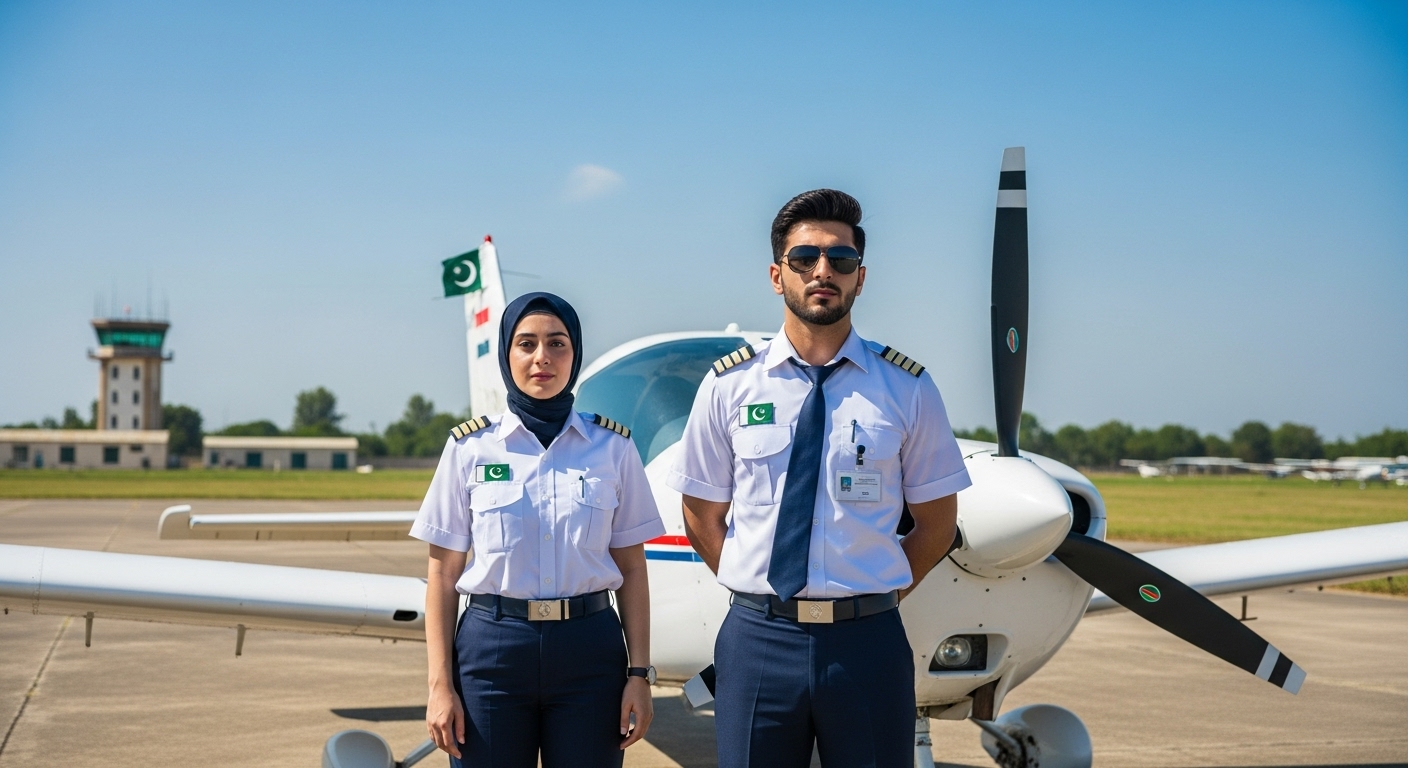Becoming a pilot is a dream for many students in Pakistan who are passionate about aviation and flying. After completing FSC (Intermediate in Pre-Engineering or Pre-Medical), you are eligible to start the journey towards becoming a professional pilot. This article provides a step-by-step guide on how to become a pilot in Pakistan after FSC, the types of pilot licenses, admission requirements, costs, and career opportunities.
1. Eligibility Criteria After FSC
To become a pilot in Pakistan after FSC, you must meet the following basic requirements:
- Educational Qualification: Minimum FSC (Pre-Engineering or Pre-Medical) with at least 60% marks.
- Age Limit: Usually 17 to 25 years at the time of admission.
- Medical Fitness: You must pass the Civil Aviation Authority (CAA) Class I Medical Examination.
- English Proficiency: Good command of English (spoken and written).
2. Types of Pilot Licenses in Pakistan
There are three main types of pilot licenses issued by the Pakistan Civil Aviation Authority (PCAA):
- Student Pilot License (SPL)
The first license you get after enrollment in a flying school. It allows you to begin basic flight training. - Private Pilot License (PPL)
This allows you to fly for personal and non-commercial purposes. - Commercial Pilot License (CPL)
This is required to become a professional, paid pilot. Most students aim for the CPL after completing their training.
3. Steps to Become a Pilot After FSC
Step 1: Choose a Flying School
Select a PCAA-approved flying school in Pakistan. Some reputed schools include:
- PIA Training Centre, Karachi
- Hybrid Aviation, Lahore
- Rawalpindi Flying Club
- Multan Flying Club
- Schon Air, Karachi
Step 2: Pass the Initial Tests
Flying schools usually conduct:
- Aptitude Test
- Written Test (English, Math, Physics)
- Interview
- Medical Test (CAA Class I)
Step 3: Get a Student Pilot License (SPL)
Once enrolled, you will start with ground school and basic training. The SPL is issued to start flight lessons with an instructor.
Step 4: Complete Flight Hours
You need to complete a minimum of:
- 40–60 hours for PPL
- 150–200 hours for CPL
This includes solo flights, cross-country flights, night flying, and instrument flying.
Step 5: Pass CAA Exams
You must pass written and practical exams conducted by the PCAA for PPL and CPL, including subjects like:
- Air Navigation
- Meteorology
- Aircraft Instruments
- Air Law
Step 6: Obtain Your CPL
Once all requirements are met, including flight hours and exams, you will be awarded the Commercial Pilot License (CPL).
4. Cost of Pilot Training in Pakistan
The cost varies by institution and location, but the general estimate is:
- Total Cost for CPL: PKR 4.5 to 6.5 million
(This includes ground school, flight hours, exams, fuel, and equipment.)
5. Career Opportunities After CPL
After getting your CPL, you can apply for jobs such as:
- Airline Pilot (after type-rating training)
- Charter Pilot
- Flight Instructor
- Cargo Pilot
- Corporate/Private Jet Pilot
Top employers include:
- Pakistan International Airlines (PIA)
- Airblue
- Serene Air
- Fly Jinnah
- Private charter companies
6. Tips for Aspiring Pilots
- Keep yourself physically and mentally fit.
- Improve your communication and decision-making skills.
- Stay updated with aviation trends and CAA regulations.
- Consider doing a Type Rating course to increase your chances with airlines.
Conclusion
Becoming a pilot in Pakistan after FSC is a challenging yet rewarding journey. It requires dedication, discipline, and a significant financial investment. However, for those who are truly passionate about flying, the sky is not the limit — it’s just the beginning.

Leave a Reply to umarbwn Cancel reply